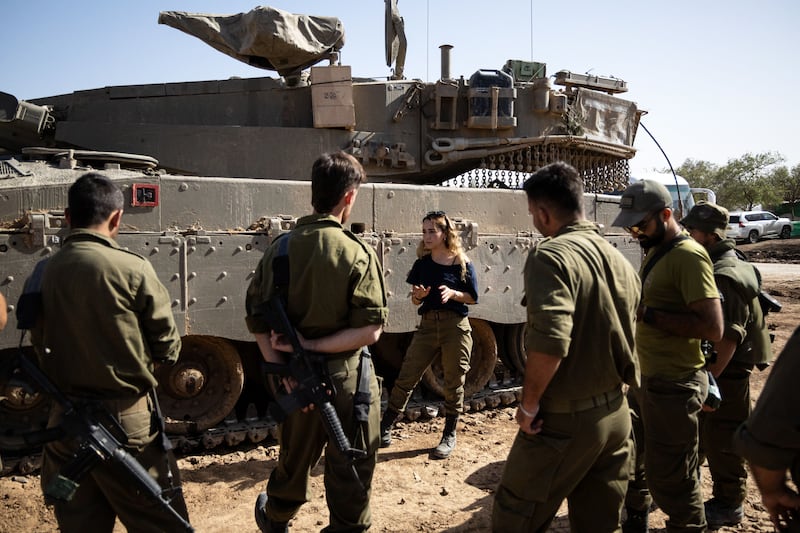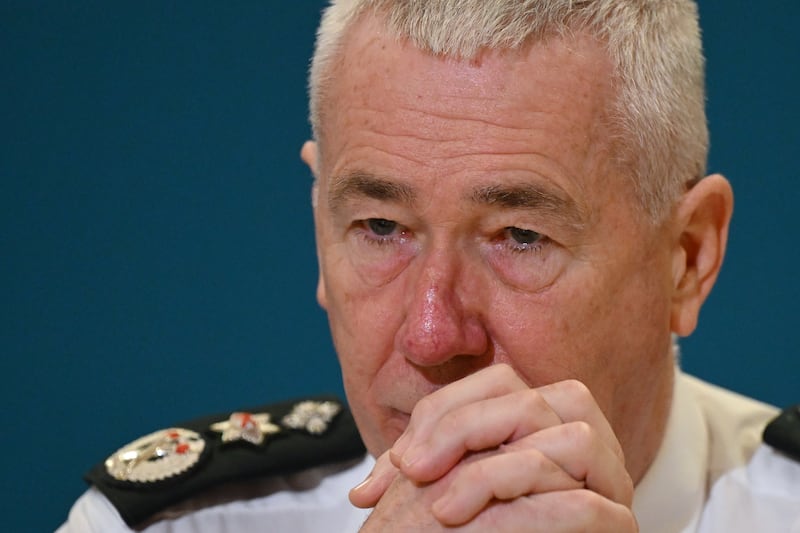Binyamin Netanyahu pledged to achieve two things when he launched a ground invasion of Gaza in response to Hamas’s deadly October 7th attack on Israel: to destroy the militant group and free the 240 hostages captured as its fighters rampaged through the south of the country.
But even as Israel began inching towards one of those goals this week – by striking a deal with Hamas to free 50 hostages in exchange for a four-day truce and 150 Palestinian prisoners held in Israel – Netanyahu insisted that the fighting had much longer to run.
“Let me make it clear: we are at war – and will continue the war,” he said ahead of a meeting to approve the deal.
The Israeli prime minister’s stance was partly designed to mollify hardliners vehemently opposed to any concessions to Hamas. But it also underscored that, even after six weeks of fighting in which it has occupied northern Gaza and wrought unprecedented destruction there, Israel is a long way from achieving its military objectives.
RM Block
“It’s fair to assume that the firepower and infrastructures of Hamas have been significantly degraded, much more than in any previous [Israeli] campaign,” said Jean-Loup Samaan, senior research fellow at the Middle East Institute of the National University of Singapore.
“But because the objective was the total destruction of the movement, including its leadership, the campaign is far from achieving it.”

Israel began its response to Hamas’s assault – which killed about 1,200 people, according to Israeli officials – with a three-week-long bombardment of Gaza, before sending troops into the north of the impoverished enclave on October 27th.
In the weeks since, the Israel Defense Forces have gradually expanded their control of the north of the strip and encircled the hub of Hamas’s political and military activities in Gaza City. The 70 fatalities among Israeli troops are far fewer than its military planners had expected.
A senior Israeli military official said the assault had “significantly hurt” 10 of Hamas’s 24 battalions, which before the war each had about 1,000 soldiers. Including the roughly 1,000 militants killed in Israel after Hamas launched the October 7th attack, Israeli officials estimate that 5,000 of Hamas’s roughly 25,000 fighters have now been killed. “It’s not 10,000, but it’s not 1,000. It’s something in the middle,” the senior military official said.
The invasion has also had a big impact on Hamas’s ability to fire rockets at Israel. In the early days of the war, Hamas regularly launched huge volleys at cities such as Tel Aviv and Ashkelon and the border areas around Gaza. But as the Israeli military has overrun critical launching positions in the north of the enclave, the fire has become more sporadic and less precise.

“The centre of gravity for [Hamas’s rocket-launching capabilities] was the Gaza City metropolitan area,” said Zvika Haimovich, former commander of the Israel Air Defense Forces. “Today we are talking about a salvo of four or five rockets every three days. In the first two weeks, it was a salvo every four or five hours. It’s a huge difference.”
Former officials say the Israeli advance has also brought other gains, including better intelligence on Hamas’s tunnel network in Gaza, and paths for advancing deeper into the strip that are less laden with explosive devices and other booby traps than the ones through the border.
“To defend against a force that is coming from new routes that were not the ones expected is going to be hard for Hamas,” said Amir Avivi, former deputy commander of the Gaza Division of Israel’s military.
For Gaza’s 2.3 million inhabitants, the cost has been devastating. The Israeli assault has killed more than 14,000 people, including over 5,300 children, according to local health officials, while 1.7 million have been displaced.
Much of the north has been rendered uninhabitable, with at least 50,000 buildings damaged. The medical system in the strip has been forced into collapse, while Israel’s restriction of supplies of fuel, food and water to the strip has prompted aid groups to declare a humanitarian catastrophe.
Yet despite the outrage that the destruction has provoked throughout the Arab world, the assault has not yet prompted other groups such as Hizbullah, the Iran-backed Lebanese militant group, to enter the fighting – something Israeli and US leaders, who have sent two aircraft carriers to the region, have been desperate to avoid.
“I think despite the initial fears, this deterrence element vis-à-vis Hizbullah or Iran is still prevailing,” said Samaan.
For all Israel’s military gains in northern Gaza, Israeli officials admit that if they are to achieve the aim of defeating Hamas, the next phase of the fighting will have to involve an advance into the south of the strip.

Israeli forces have already begun to prepare for such a move, and officials have begun warning residents of Khan Younis to flee towards what they have said will be a “safe zone” in Muwasi, a 14sq km area in the south-west of the territory.
Aid groups have dismissed the idea of cramming hundreds of thousands of people, many of whom have already been displaced from the north of the strip, into such a tiny space as unworkable. But Israeli officials insist there is no other way to defeat Hamas, as its top leaders in Gaza, such as Yahya Sinwar and Mohammed Deif, are thought to be hiding there, and because Hamas has also redeployed numerous fighters from the north to the south.
“I’m quite sure that hundreds, if not thousands, of Hamas members who are originally from the northern part of Gaza are right now in the south,” said Michael Milstein, a former IDF intelligence official. “And of course, they also transferred their weapons and rockets to the south with them.”
Taking control of the south will also be necessary if Israel is to have any chance of destroying Hamas’s network of tunnels, which functions as a crucial refuge for their fighters, as well as a store for weapons. But the tunnels are also thought to be where many hostages are being held – which will make decisions on how to deal with them extremely delicate.
Israel’s military said on Wednesday that its combat engineers had destroyed the shafts of some 400 tunnels. But officials concede this is only a limited dent in a system that is thought to be more than 500km in length.
“Once we [take all of Gaza] it will probably take almost a year to clear the whole Gaza Strip, and to explore all their underground infrastructures, and find all their rockets and missiles...The strip is one big bunker,” said Avivi. “It’s full of booby traps, full of IEDs everywhere, bombs, munitions – it’s unbelievable what they built. So there’s going to be a lot of work.”
But even if Israel succeeds in those tasks, analysts say the lack of a clear plan for how Gaza should be run if Hamas is ousted means that Israeli forces could yet end up being deployed in the enclave long after the fighting has ended, with an ever-evolving set of objectives.
The bigger question is whether it is possible to destroy a group that has been deeply embedded in the fabric of the enclave for 16 years and that represents an ideology as much as a political and military entity.
“[The operation] might eventually remove Hamas from that equation but it triggers new unknowns about the vacuum in the Gaza Strip and how this will eventually impact the security of Israelis,” said Samaan.
“It’s likely to create a phenomenon of ‘mission creep’ where the [Israeli military] finds itself forced to stay in Gaza for a much longer period than expected. At the end of the day, this is the natural outcome of a military operation without a clear political plan.” – Copyright The Financial Times Limited 2023




















